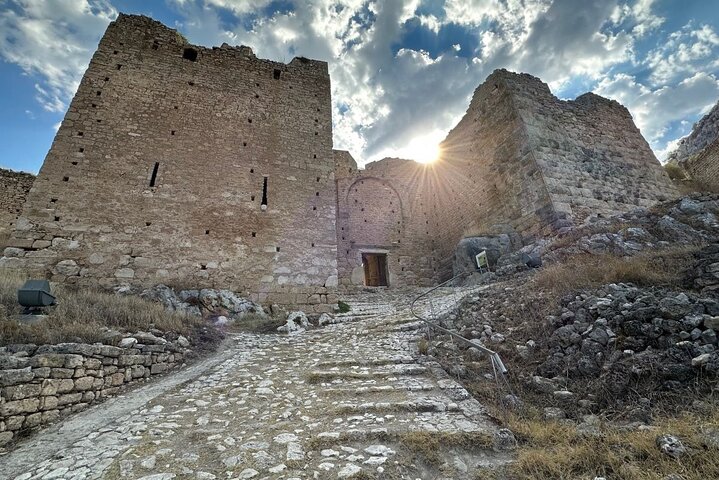
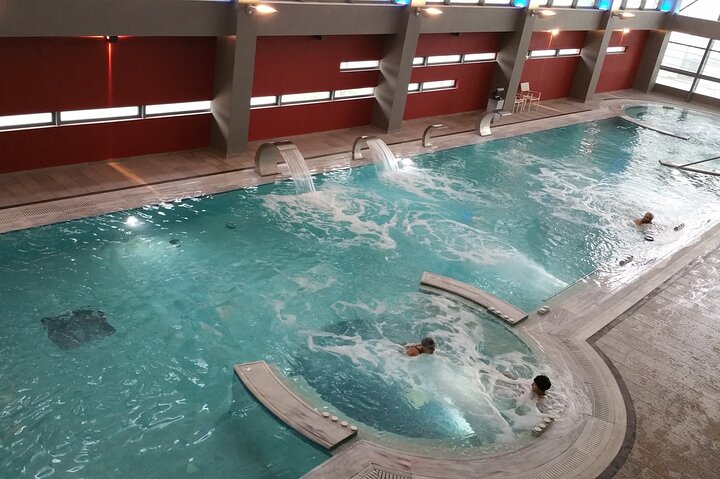
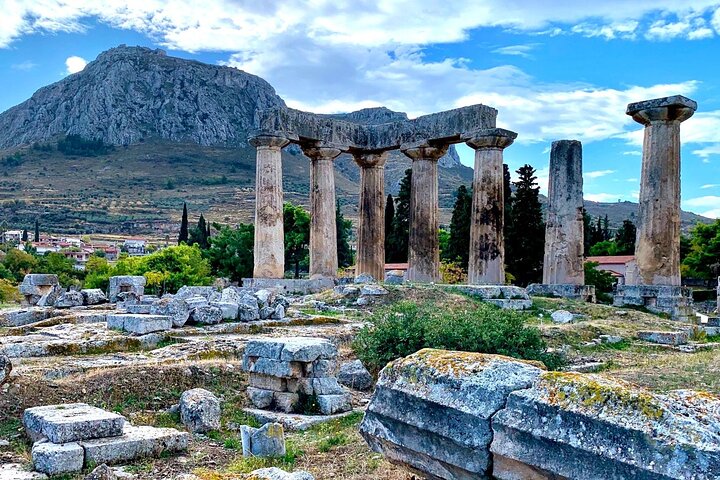
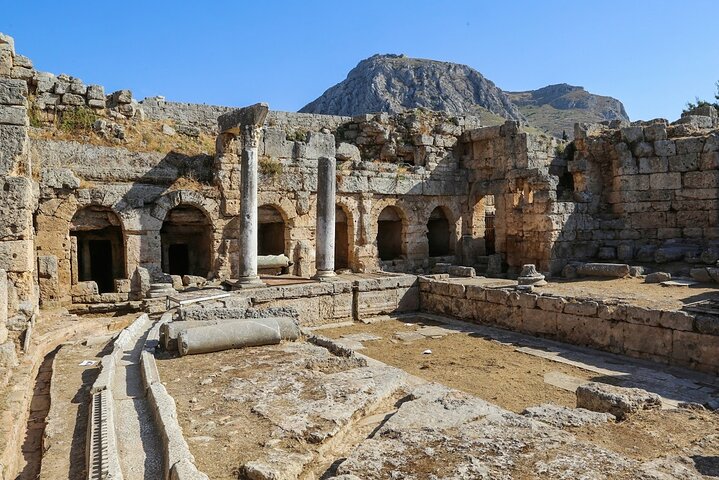


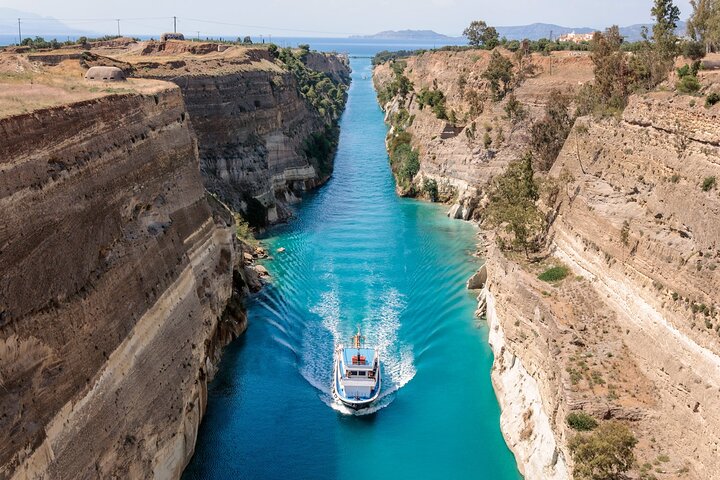
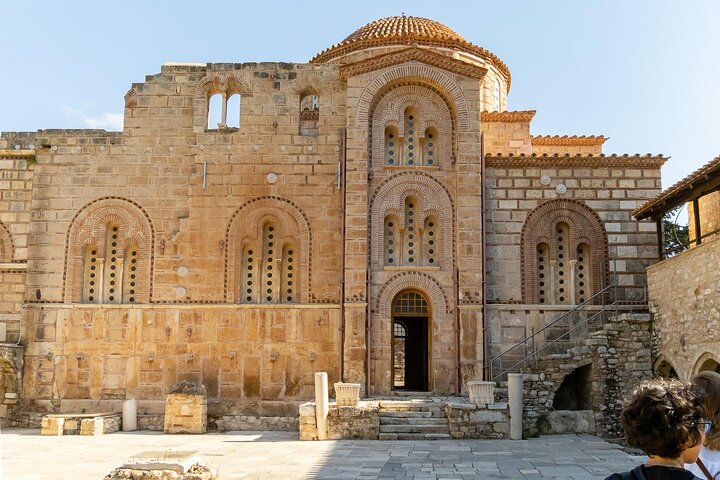
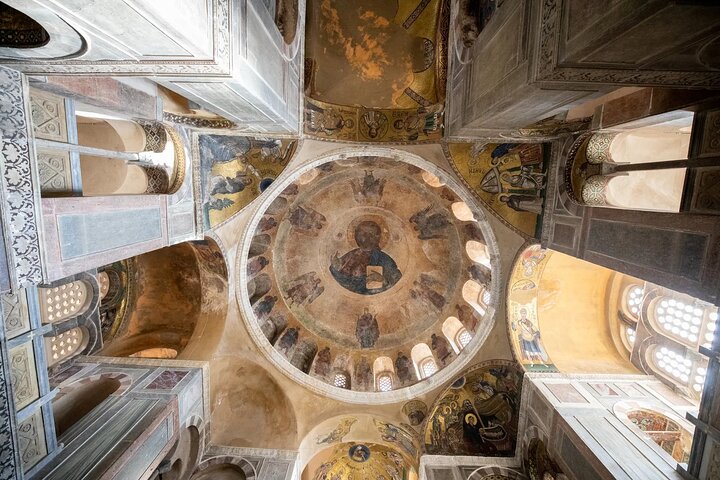

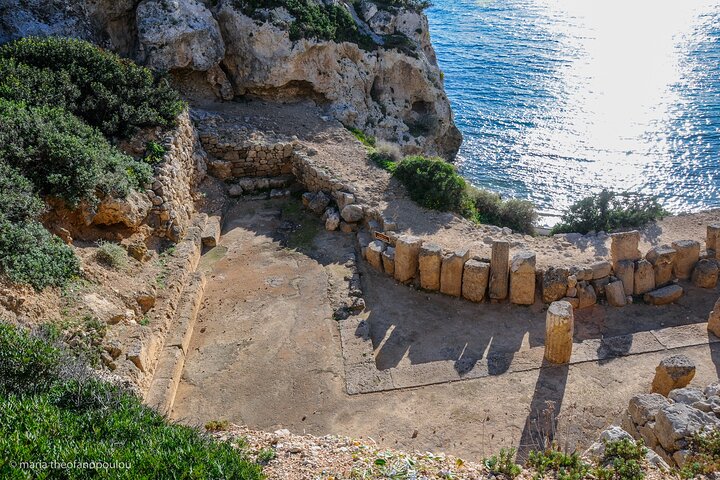
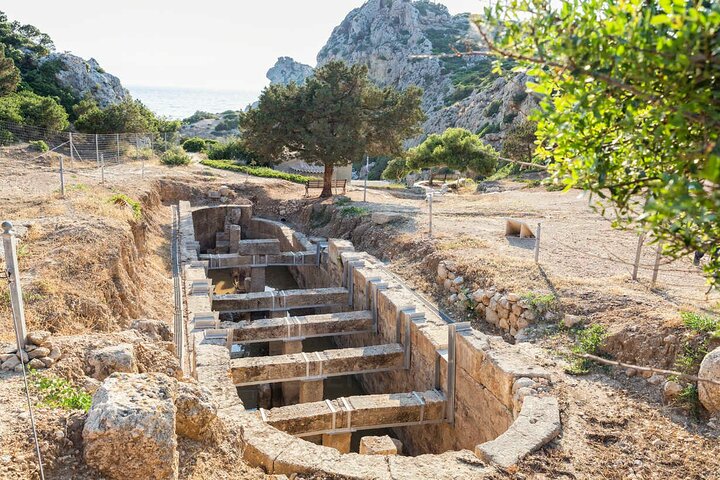

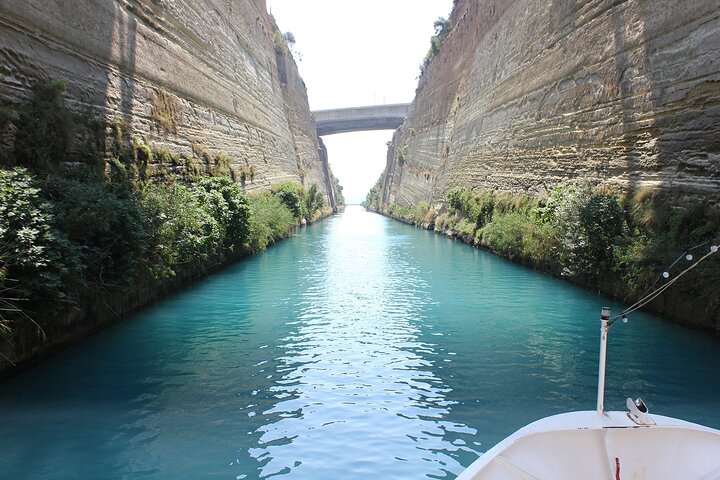
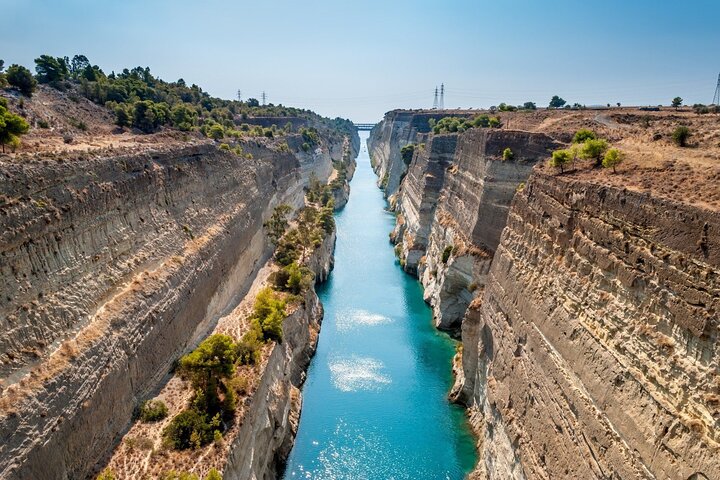
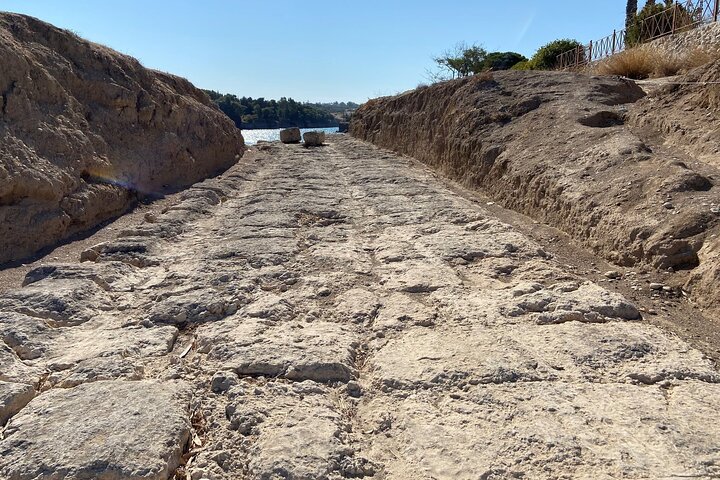
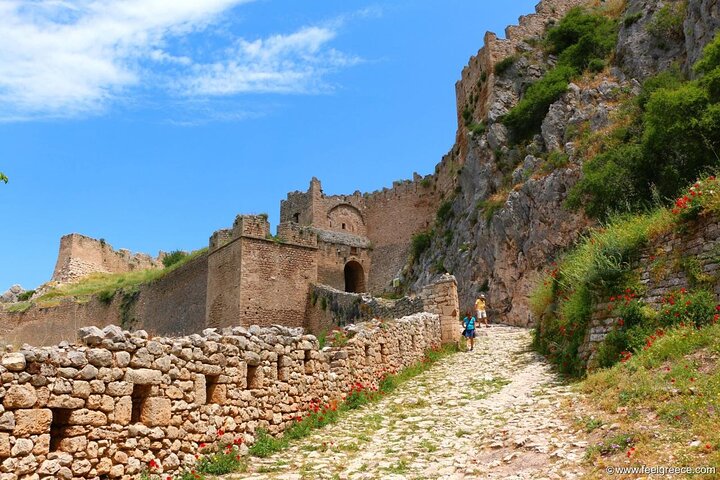
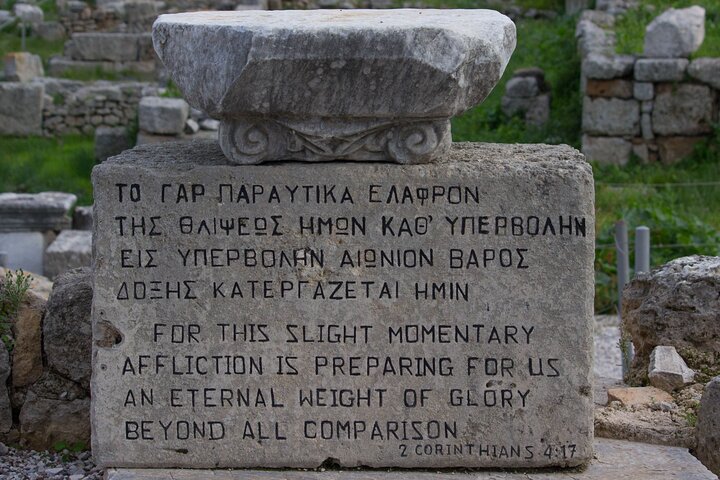
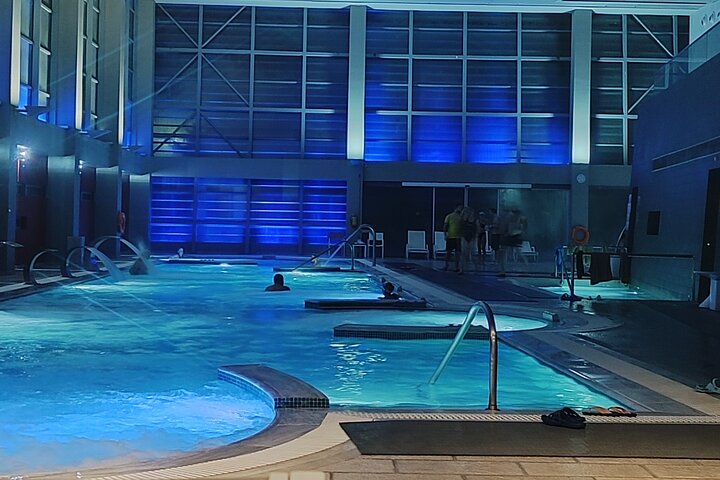
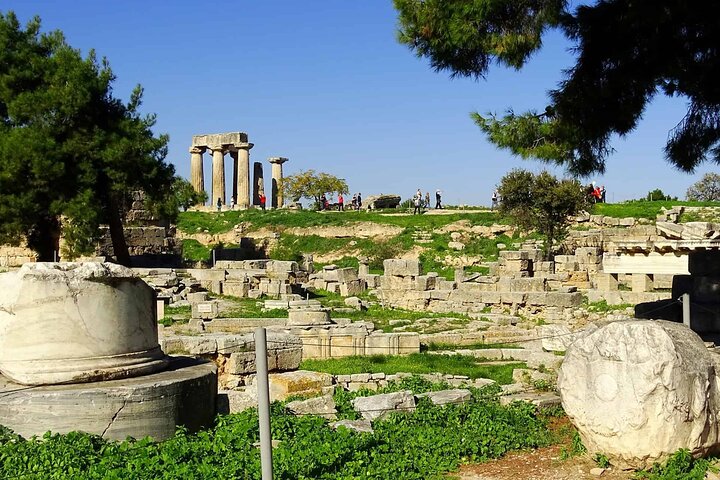




















Isthmia /
The Diolkos stone road (450bc), an ancient Greek engineering marvel, allowed ships to travel overland from the Ionian Sea to the Aegean, bypassing the Peloponnesian Peninsula. Like the Corinth Canal, which was finally constructed millennia later (1893), it made passage around the peninsula much safer for the vessels, but it also meant backbreaking labor for the unfortunate men who were tasked with pulling the vessels across the isthmus. Under the blue skies of Greece, maybe we will see a giant vessel slowly makes its way through the rocky walls of a narrow, artificial waterway, with just a few inches to spare on either side, while those on board take in the engineering marvel in front of them.
An ancient castle on a 575m high rock. At the foot of the hill is Ancient Corinth. Its perimeter walls total approximately 3,000 meters in length, making it the largest fortress in the Peloponnese and one of the most important in the region. The interior of the castle still contains the ruins of the temple of Aphrodite (5th-4th century BC), the spring of Ano Peirini, several Christian churches, a Byzantine underground cistern, mosques, fountains etc.
Corinth /
Ancient Corinth was one of the largest and most important cities of Greece, with a population of 90,000 in 400 BC. The Romans demolished Corinth in 146 BC, built a new city in its place in 44 BC, and later made it the provincial capital of Greece. Corinth was a city-state on the Isthmus of Corinth, the narrow stretch of land that joins the Peloponnese to the mainland of Greece, roughly halfway between Athens and Sparta. For Christians, Corinth is well known from the two letters of Saint Paul in the New Testament, First and Second Corinthians. Corinth is also mentioned in the Acts of the Apostles as part of the Paul the Apostle’s missionary travels. In addition, the second book of Pausanias’ Description of Greece is devoted to Corinth.
Corinth /
Lunch, directly after your exit from the archaeological
site of Corinth (not included)
Loutraki /
Ancient path for boats 600bc
Perachora /
has the undeniable privilege of extending next to the sea, isolated at the western end of the homonymous peninsula, in a closed creek, contributing to its mysterious atmosphere.
The site where people worshipped the mythical goddess Hera, near Loutraki, is not just a temple. The Heraion of Perachora includes a whole complex of findings, from the 9th century BC to the Roman period. You will be amazed as you wander around the western courtyard, the archaic temple, the altar, the stoa, the arched cistern and other monuments, besides the fortification walls.
Loutraki /
swimming at the ultra-modern Loutraki Thermal Spa facilities offer exclusive wellness services with the life-giving power of Loutraki's thermal water.
Corinth /
Total driving about 4 hours from Athens to corinth and back
Başlayan fiyatla
Isthmia /
The Diolkos stone road (450bc), an ancient Greek engineering marvel, allowed ships to travel overland from the Ionian Sea to the Aegean, bypassing the Peloponnesian Peninsula. Like the Corinth Canal, which was finally constructed millennia later (1893), it made passage around the peninsula much safer for the vessels, but it also meant backbreaking labor for the unfortunate men who were tasked with pulling the vessels across the isthmus. Under the blue skies of Greece, maybe we will see a giant vessel slowly makes its way through the rocky walls of a narrow, artificial waterway, with just a few inches to spare on either side, while those on board take in the engineering marvel in front of them.
An ancient castle on a 575m high rock. At the foot of the hill is Ancient Corinth. Its perimeter walls total approximately 3,000 meters in length, making it the largest fortress in the Peloponnese and one of the most important in the region. The interior of the castle still contains the ruins of the temple of Aphrodite (5th-4th century BC), the spring of Ano Peirini, several Christian churches, a Byzantine underground cistern, mosques, fountains etc.
Corinth /
Ancient Corinth was one of the largest and most important cities of Greece, with a population of 90,000 in 400 BC. The Romans demolished Corinth in 146 BC, built a new city in its place in 44 BC, and later made it the provincial capital of Greece. Corinth was a city-state on the Isthmus of Corinth, the narrow stretch of land that joins the Peloponnese to the mainland of Greece, roughly halfway between Athens and Sparta. For Christians, Corinth is well known from the two letters of Saint Paul in the New Testament, First and Second Corinthians. Corinth is also mentioned in the Acts of the Apostles as part of the Paul the Apostle’s missionary travels. In addition, the second book of Pausanias’ Description of Greece is devoted to Corinth.
Corinth /
Lunch, directly after your exit from the archaeological
site of Corinth (not included)
Loutraki /
Ancient path for boats 600bc
Perachora /
has the undeniable privilege of extending next to the sea, isolated at the western end of the homonymous peninsula, in a closed creek, contributing to its mysterious atmosphere.
The site where people worshipped the mythical goddess Hera, near Loutraki, is not just a temple. The Heraion of Perachora includes a whole complex of findings, from the 9th century BC to the Roman period. You will be amazed as you wander around the western courtyard, the archaic temple, the altar, the stoa, the arched cistern and other monuments, besides the fortification walls.
Loutraki /
swimming at the ultra-modern Loutraki Thermal Spa facilities offer exclusive wellness services with the life-giving power of Loutraki's thermal water.
Corinth /
Total driving about 4 hours from Athens to corinth and back
Alışveriş deneyiminizi iyileştirmek için yasal düzenlemelere uygun çerezler (cookies) kullanıyoruz. Detaylı bilgiye şurdan ulaşabilirsiniz. Gizlilik Politikası ve Kişisel Verilerin Korunması